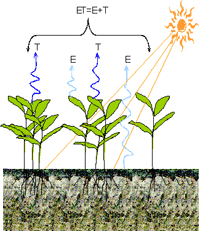Agricultural Research Division of IANR

West Central Research and Extension Center, North Platte
Date of this Version
10-2013
Citation
Published in Weed Science 61:4 (October-December 2013), pp. 549-556; doi: 10.1614/WS-D-13-00015.1
Abstract
Musk thistle is an invasive weed that is widely distributed throughout much of North America, including grasslands in temperate climates of the midwest USA. A series of laboratory and greenhouse experiments were conducted to determine the effect of various environmental factors on germination of musk thistle seeds. In temperature-fluctuation experiments, seed germination was greater than 65% in both alternating (30/20 C) and constant (20 or 25 C) temperature regimes with an 8-h day but less (33%) in warmer regimes (35/20 C). Germination of musk thistle seeds was 37% in alternating temperature regimes of 30/20 C in total darkness, but less than 67% in pots in the greenhouse. Differences of 10 and 15 C between day and night temperatures resulted in 91 and 75% maximum germination of musk thistle, respectively. Increasingly dryer soils reduced germination of musk thistle seeds from 35% (−0.03 MPa) to 0% (−1.2 MPa), whereas saline soils (> 80 mM) reduced maximum germination to less than 10%. Musk thistle seeds collected from populations in a bare-ground area had 96% germination, which was greater than that of seeds collected from populations growing in a perennial grass pasture (71%). A residence time (i.e., period that seeds remained on the parent plant) of 9 to 12 wk after capitulum maturity resulted in seeds germinating more quickly than those dispersed earlier. Overall, reduced light levels, cool and fluctuating temperatures, and amount of time seeds remained in residence are some of the most important factors that contribute to germination of musk thistle seeds. Information on germination dynamics of musk thistle seeds provides an understanding of the interactions that affect this process and underscores the importance of timely management strategies in temperate grasslands.


Comments
Copyright © 2013 The Weed Science Society of America. Used by permission.